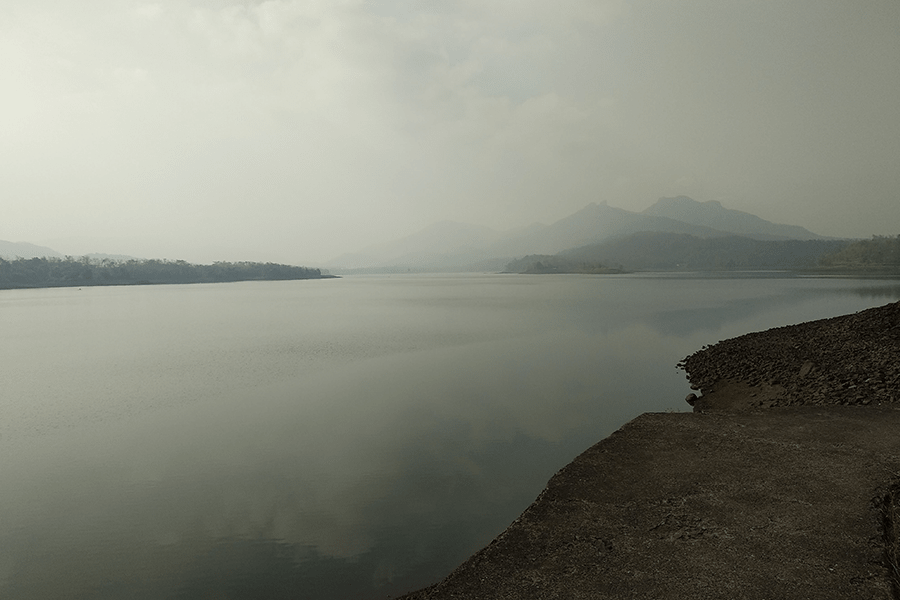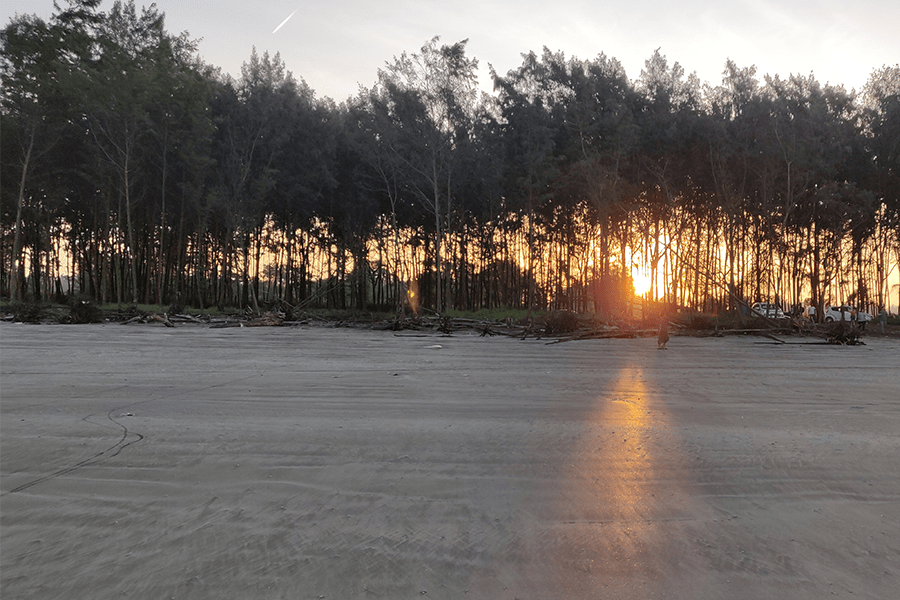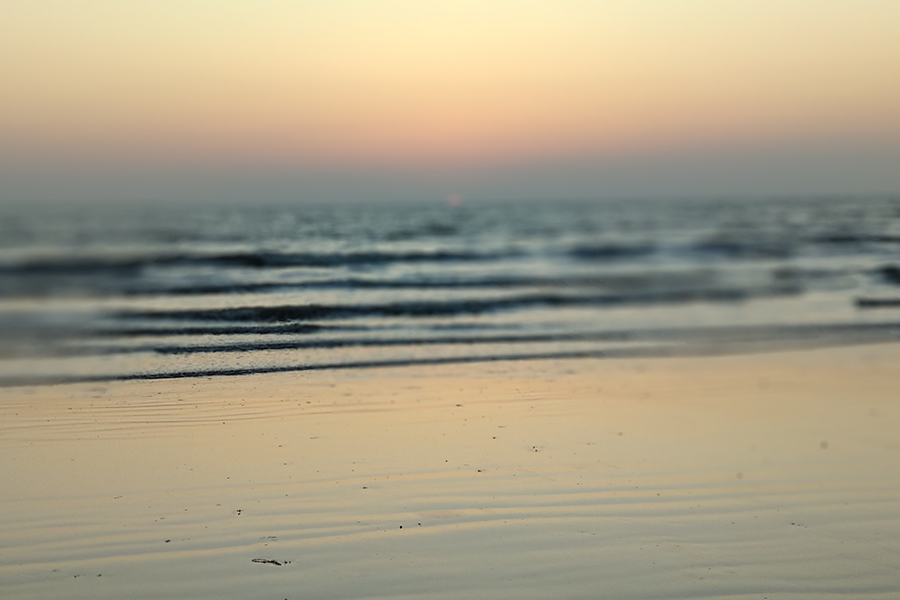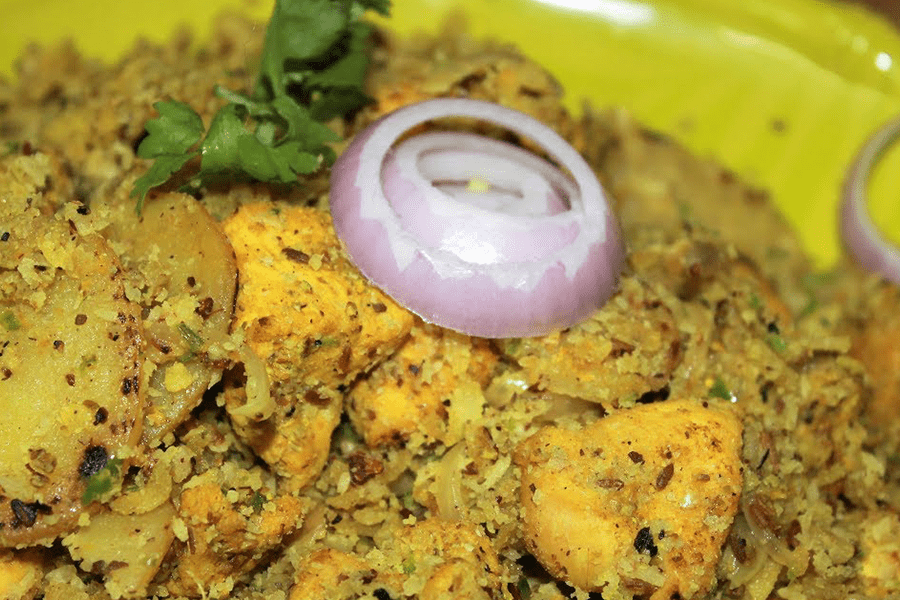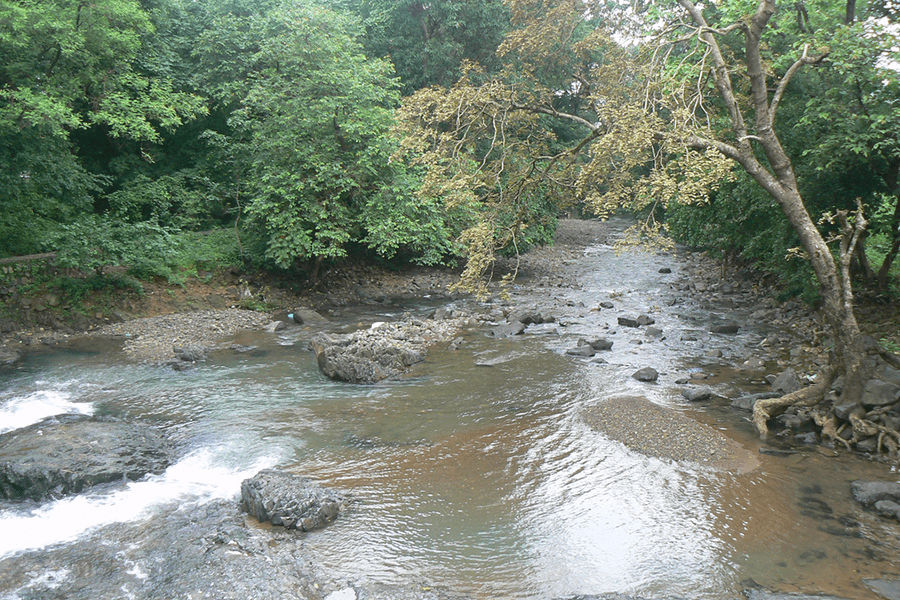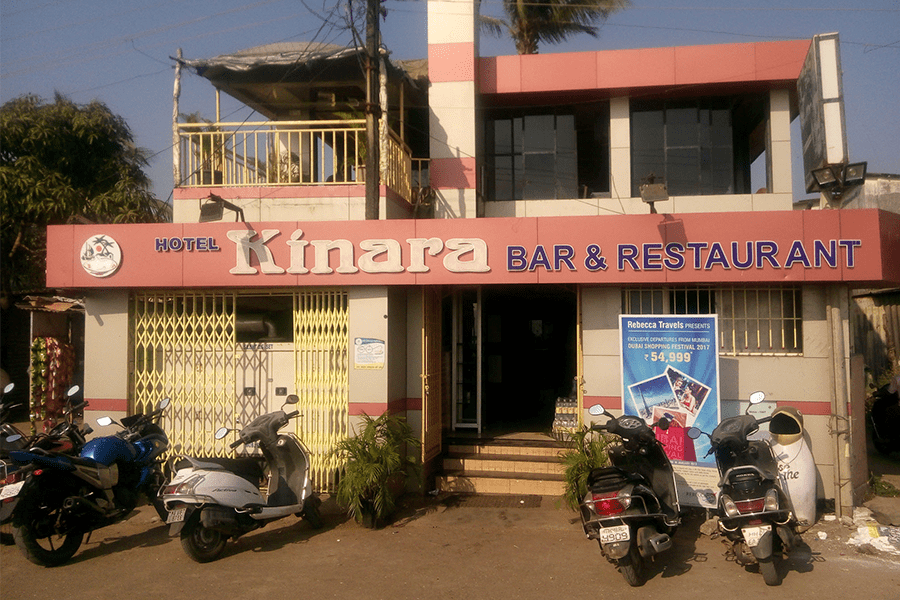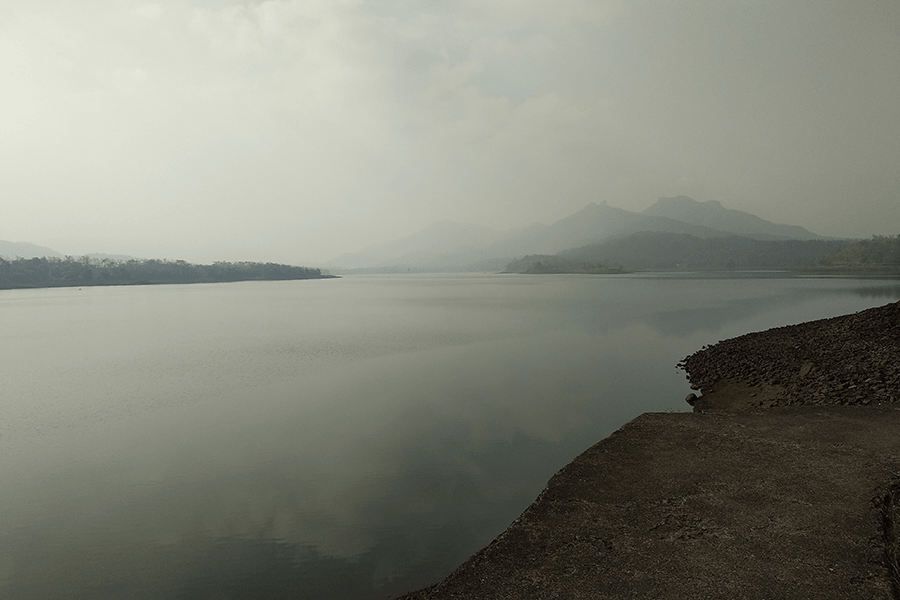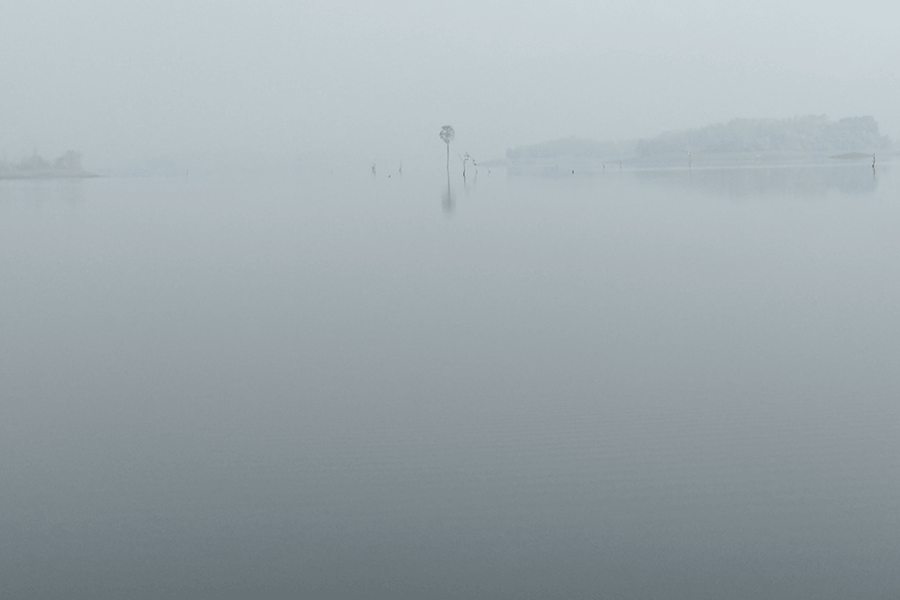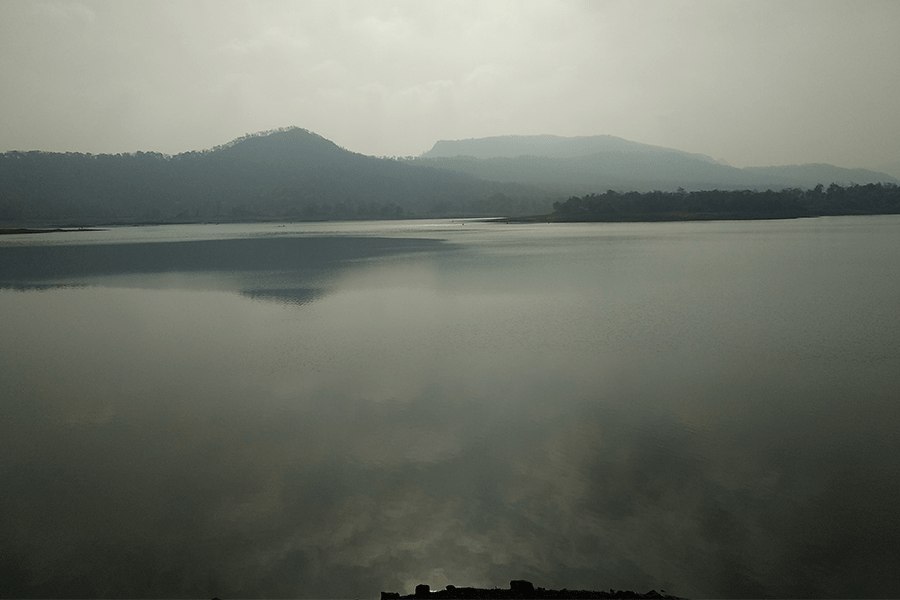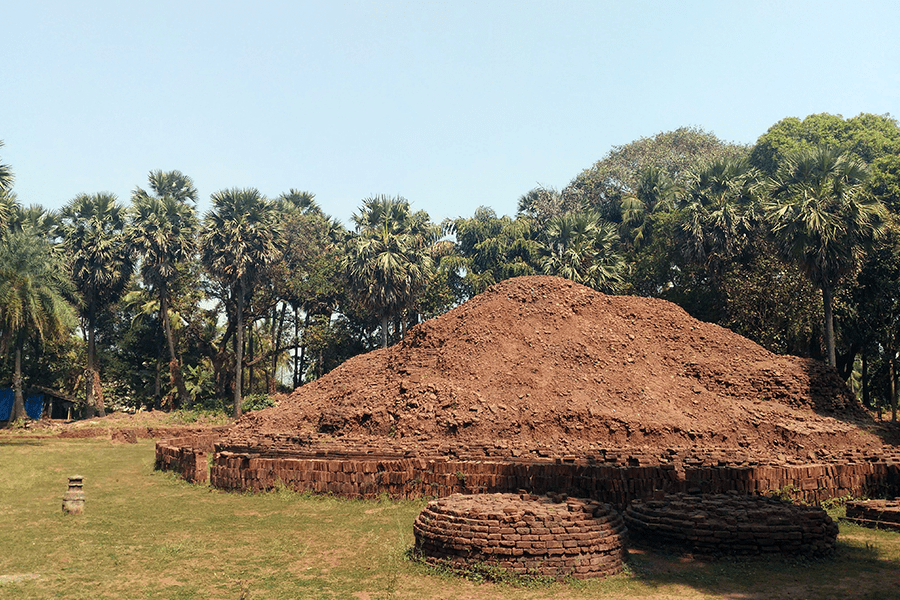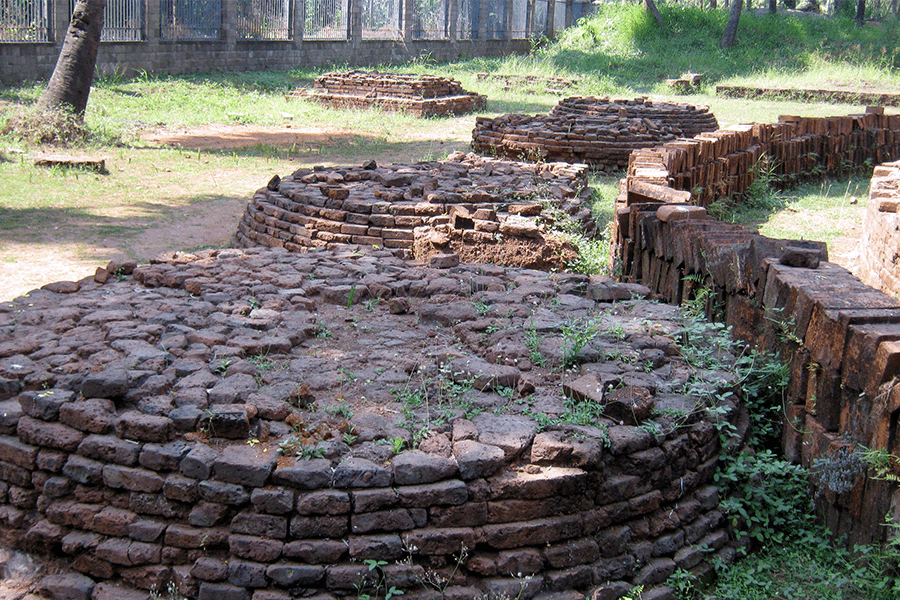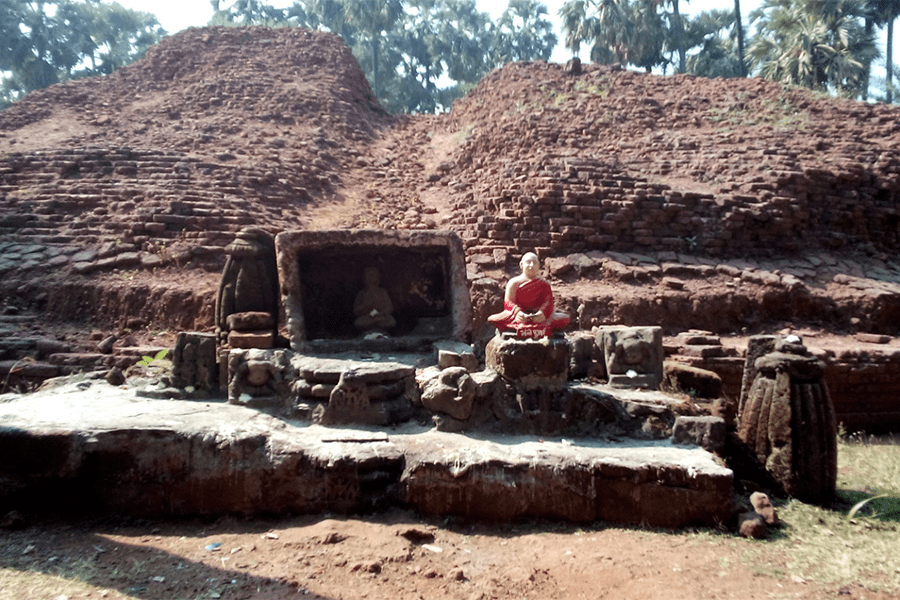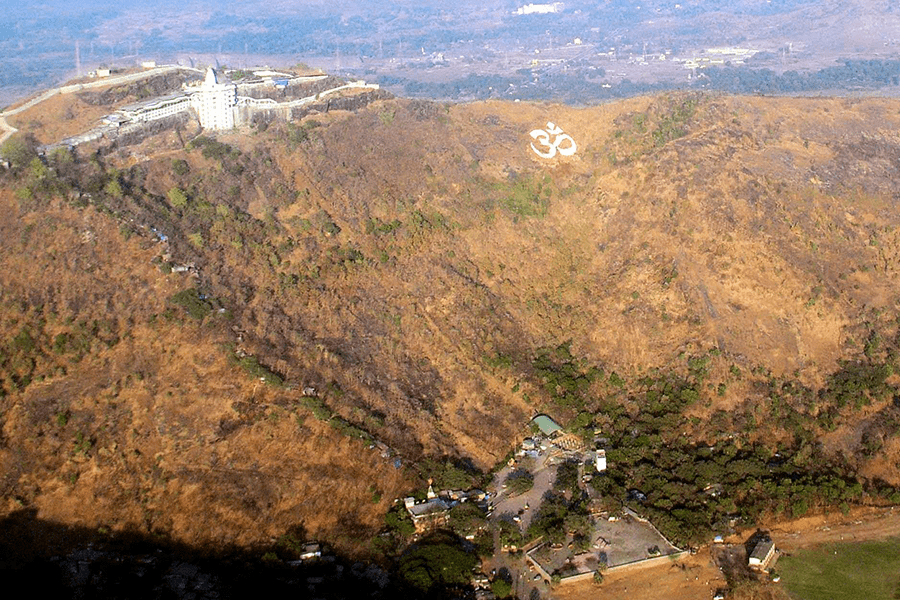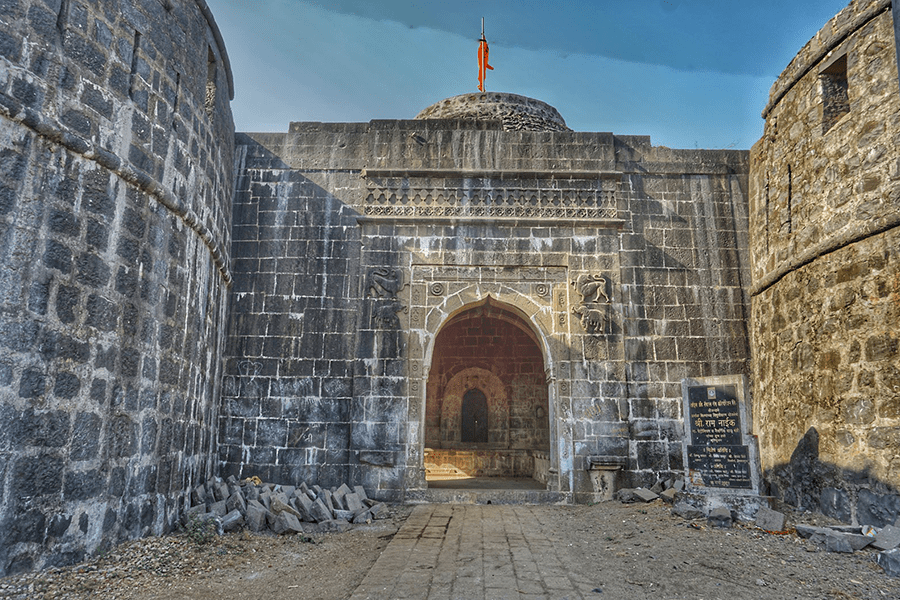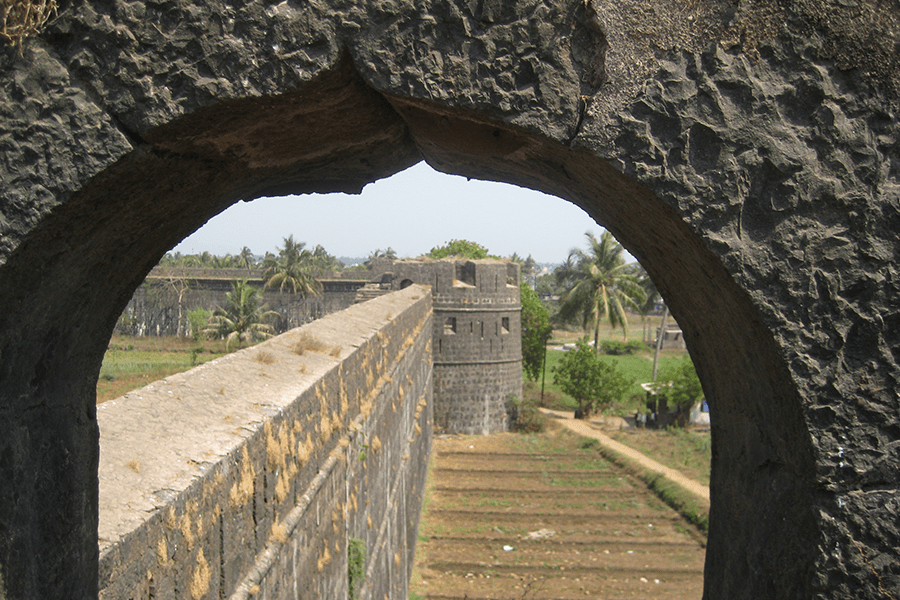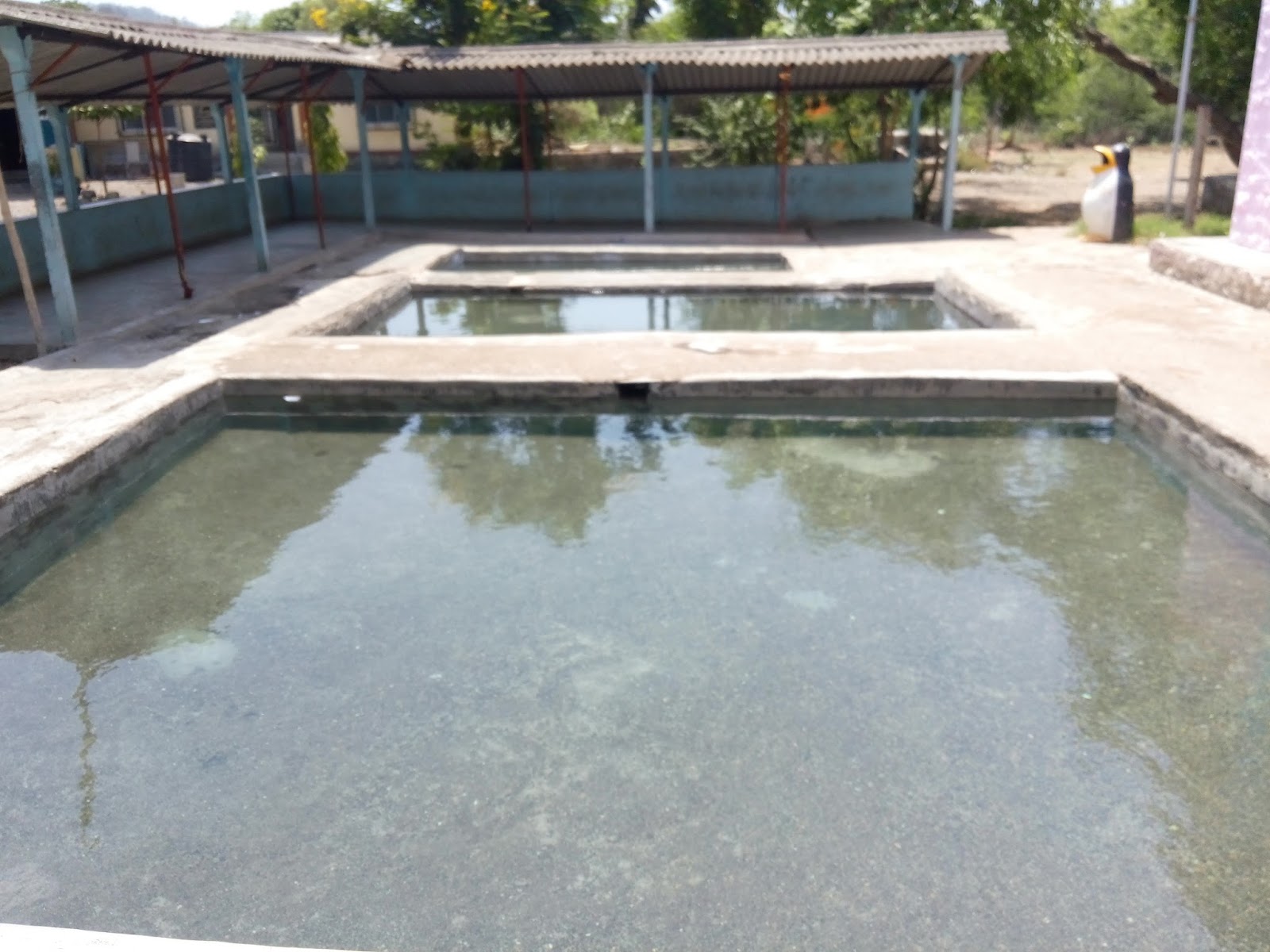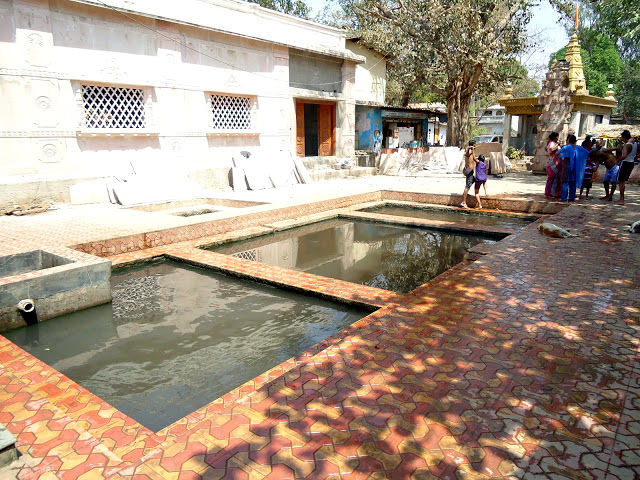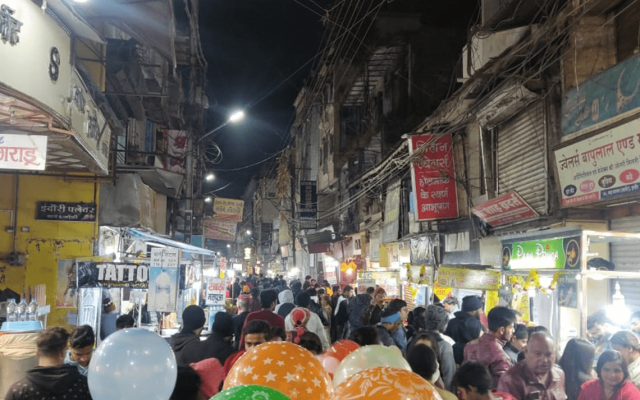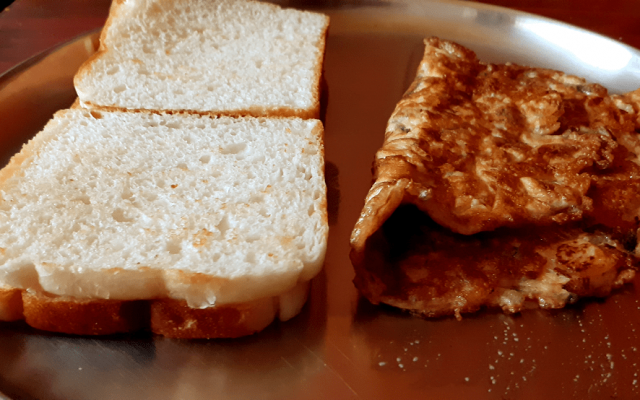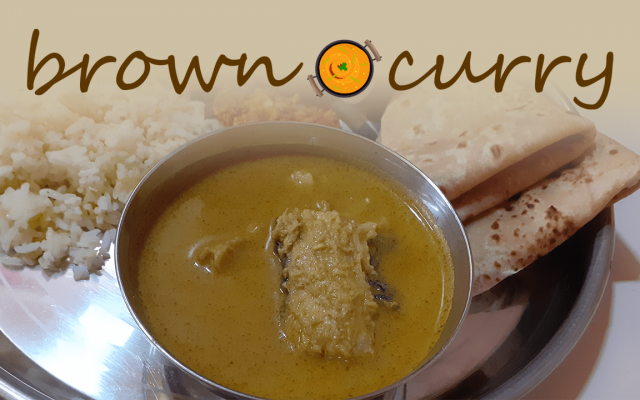Earlier VASAI was known for trading center thus now it’s become historic place for various reasons… lets check it out
1. VASAI FORT
The Vasai fort is a major tourist attraction in the region for its Indo-Portuguese history. The ramparts overlook is alternatively called the Vasai Creek and the Bhayandar Creek and are almost complete, though overgrown by vegetation. The Portugal buildings inside the fort are in ruins, although there are enough standing walls to give a decent knowledge of the ground plans of those structures. Some have well-preserved façades.
Three chapels inside the fort are still recognisable. They have façades typical of 17th-century Portuguese churches. The southernmost of those features a well-preserved barrel-vaulted ceiling. Besides all the structures, tourists often also observe the character that has appropriated much of the fort. Butterflies, birds, plants and reptiles can all be observed.
The fort is additionally a well-liked shooting location for Bollywood movies and songs. The Bollywood hit ‘Kambakkht Ishq’ from Pyaar Tune Kya Kiya is one among the Bollywood songs. Movies like Josh, starring Shah Rukh Khan, and Love Ke Liye Kuch Bhi Karega have variety of scenes from the fort. Other films shot here include Khamoshi and Aag. The fort was also one among the shooting locations for the international hit song ‘Hymn for the Weekend’ by British band Coldplay. The fort showcased at the beginning and in between is that the Bassein Fort. The video becoming the second most-viewed music video for Coldplay (after “Something a bit like This”).
2. BHUIGAON BEACH
This beach is known as the ‘untouched beach’ because it is located in the interiors of the suburb away from the hustle bustle. It is so clean & a silent beach, one might not find too many of us around as this beach is hardly known to any. This beach is found within the vicinity of a village named Bhuigaon & hence the beach is known as after this village.
3. POHA BHUJING DISH, AGASHI
Chicken poha, or bhujing, as it’s popularly called, is one among the foremost unique culinary creations in town, and a requirement go for anyone who’s hospitable experimenting with food.
Ever wondered how it would be to have poha mixed with chicken? Well, you’ll stop wondering and instead, make your thanks to Agashi Bhujing Centre in Virar and taste one among the foremost innovative local dishes in Mumbai.
Created in 1940 in Agashi, located about 5kms from Virar within the outskirts of Mumbai, this dish had unparalleled fame in Virar-Vasai, but not so much outside the area {but we’re changing that}.
This interesting innovation is made using marinated potatoes and chicken, which are first skewered and cooked on charcoal, then fried in oil and onions, later mixed with masala and nylon poha {the best quality poha}. The result is a delicious item unlike any other we’ve eaten before. Those who’ve lived within the city for long and don’t mind travelling to the outskirts of Mumbai just to eat, have a minimum of once tried this dish.
4. TUNGARESHWAR
Tungareshwar wildlife sanctuary at Vasai, A green belt located at Vasai East may be a great option for nature walk, monsoon trials as it has a beautiful temple of lord Shiva and waterfalls not far from National Highway at distance of 59 Km from Mumbai city.
Frequented as Monsoon destination and a perfect location for each day picnic in woods and scenic nature, Two main attractions of Tungareshwar in rainy days are the Waterfalls and a temple of Lord Shiva which is deep inside hilly trek of forest area.
A gorgeous place for photography with Birds, Reptiles and Insects and other flora fauna within the green, enjoying the same nature and waterfalls as we humans do.
5. HOTEL KINARA PACHUBANDER
Taking care of hunger pangs till as late as 12:30PM, The Kinara Bar & Restaurant is a casual dining restaurant serving North Indian, Chinese, Biryani, Desserts preparations. A highly-rated place in Vasai, it is praised for its timely service and is a nice joint to visit when one is looking to satiate hunger pangs with tasty, hygienic food at nominal prices.
6. VANDRI LAKE
“Vandri lake may be a monsoon blessing to several as this one location seems to be a perfect at some point picnic spot and an outstanding location for overnight camping inside woods (Dense Forest area).
Vandri is far almost Vasai Virar location and attractions like Dam, Waterfalls and Camping makes it an ideal monsoon destination for bikers, cyclists and family friends too..”
Vandri lake is large and not much found in Wiki so are often said as less explored. Compare it with the other lakes inside Mumbai or simply check the map, an enormous blue zone round the greenery is what are often seen. Its an isolated lake deep inside mountains terrain, about 5 Km deep from National Highway 48.
This place is usually frequented by locals, bikers and group of cyclists too. Most talks about the Sunrise attraction which is in fact very beautiful once you are standing near a waterfall, Over looking the dam towards the mountains from where Sun rises slowly giving reflections to lake water and surroundings.
An important point to be noted here is that outsiders (Non Local Villagers) are allowed post 7:00 Am inside the lake & dam area for safety and security of everyone since the place is isolated and serene.
7. SOPARA STUPA
It is hard to believe that this area was an ancient urban centre, that grew round the port of Shurparaka or Sopara, 2300 years ago. Legend has it that Buddha himself visited Sopara, though it is not historically true.
Sopara was an ancient port town and therefore the capital of the traditional Aparanta. The ancient port of Sopara was a crucial port in western India, which operated under the celebrated port of Cambay. The site of this ancient town is found near this day Nala Sopara. In past, it had been the most important township on India’s West Coast, trading with Mesopotamia, Egypt, Cochin, Arabia and Eastern Africa.
The Mahabharata and therefore the Puranas state that the Śūrpāraka was reclaimed from the ocean for the dwelling place of Parashurama and it became a tirtha for this reason. The finding of the relics in a stupa and the rock edicts (the fragments of the 8th and 9th major rock edicts) of Ashoka in 1882 prove the importance of this port town from the 3rd century BCE to the 9th century CE. The Buddhist text Mahavamsa (VI, 46,47) states that the primary king of Sri Lanka, Vijaya sailed from Supparaka (Sopara) to Sri Lanka. Ptolemy mentioned this town as Soupara, and it was a major commercial centre during his time According to the Jaina writers, Shripala, a mythical king married Tilakasundari, daughter of king Mahasena of Soparaka. Jinaprabhasuri (14th century) in his Vividhatirthakalpa mentioned Soparaka together of 84 Jaina tirthas (sacred places). He also mentioned about a picture of Rishabhadeva located during this city till his time.
The earliest reference occurs in Mahabharata as Shuparak. Suppara Jataka, believed to be of 6th century BC, talks of Sopara as a prosperous port trading with ports of S.W.Asia, Gujarat, Malabar and Srilanka, its experts (navigation pilots- bodhisattvas), and the seas that they voyaged across. From about third or fourth century BC precise historic data can be pieced together.
During primeval time, it had been a huge city of India western Ghats and was one among the main ports for foreign trading. India was trading with Arabia, Africa, Egypt and Rome via this Port. It has also been suggested that King Hiram of Tyre brought gold, precious stones and almug trees for Solomon from this city that was called land of Ophir.
8. JIVDANI DEVI TEMPLE
The antiquated acclaimed Maa Jivdani sanctuary is situated on the Jivdani slope in Virar, a suburb of Bombay. In seventeenth century there was a fortress by the name of Jivdhan on this slope. Inside the strongholds there are some old looking hollows and water storages, the greater a part of which have now for all intents and purposes became scarce. The incredible story of Jeevdaani Devi is as per the following: During their backwoods travel, Pandavas came to Shurparaka. They glided by the blessed sanctuary of Vimaleshwar sanctified by Lord Parashuram and on their excursion to Prabhas ended on the banks of Vaitarni stream. Doing as such Pandavas additionally made an arrangement of little gives in now known as “Pandav Dongri” about a mile from Shrigaon for the hermits.Many yogis used to remain in Pandav Dongri and have darshan of Jeevdhani Devi
9. ARNALA FORT
Arnala Fort is made on a little island of the port town of Arnala, located around 8 miles north of Vasai, Maharashtra, India. Being an island fort, it’s also called Jaldurg or Janjire-Arnala. The Portuguese, who built this fort, called the island Ilha das vacas. During the late 17th and early 18th centuries, after an extended struggle with the Mughal Empire, the Maratha Confederacy came to dominate present day Maharashtra.
In 1737 the then Peshwa Baji Rao I sent his brother, Chimaji Appa, to require the Bassein Fort from the Portuguese. After winning the Battle of Vasai, his general, Shankarji Pant, persuaded Chimaji to launch an assault on Fort Arnala, for its strategic importance to the Maratha navy in assaulting Portuguese interests. Their first assault, coordinated with a Maratha naval force commanded by Manaji Agre, was routed by a superior Portuguese naval force. A second assault on the fort on 28 March 1737, caught the Portuguese all of sudden and made them to abandon the fort. The victory was commemorated by a plaque installed on the northern wall of the fort and remains visible today. The Marathas then rebuilt the fort, constructing three bastions Bahirav, Bhavani, and Bava.
The British captured the fort on 18 January 1781 during the primary Anglo-Maratha War.
The Marathas controlled the fort until 1817. During the third British-Maratha war, despite successfully defending the fort, the Marathas were forced to surrender the fort to British thanks to their superior naval power. The treaty of Salabai returned the Arnala and Bassien forts to the Marathas, but British regained the forts under the Treaty of Poona. Today the fort is during a state of disrepair.
10. SATIVALI HOT WATER SPRING
Varai Sativali may be a predicament spring located off the Mumbai Ahmedabad Highway within the Palghar district of Maharashtra. Virar Railway station is located around 20 KM away.
This place is managed by Shri Shankar Mandir Trust, the pool with hot, clean natural water pool for Man and covered pool for woman. nearby there’s alittle river bank also, but water is during this river is around monsoon season only. Carry your food with you as there’s just one small hotel, where u find Vada Pav, Cold drinks, Water and Biscuit only. but very nice place to relax with Nature.

